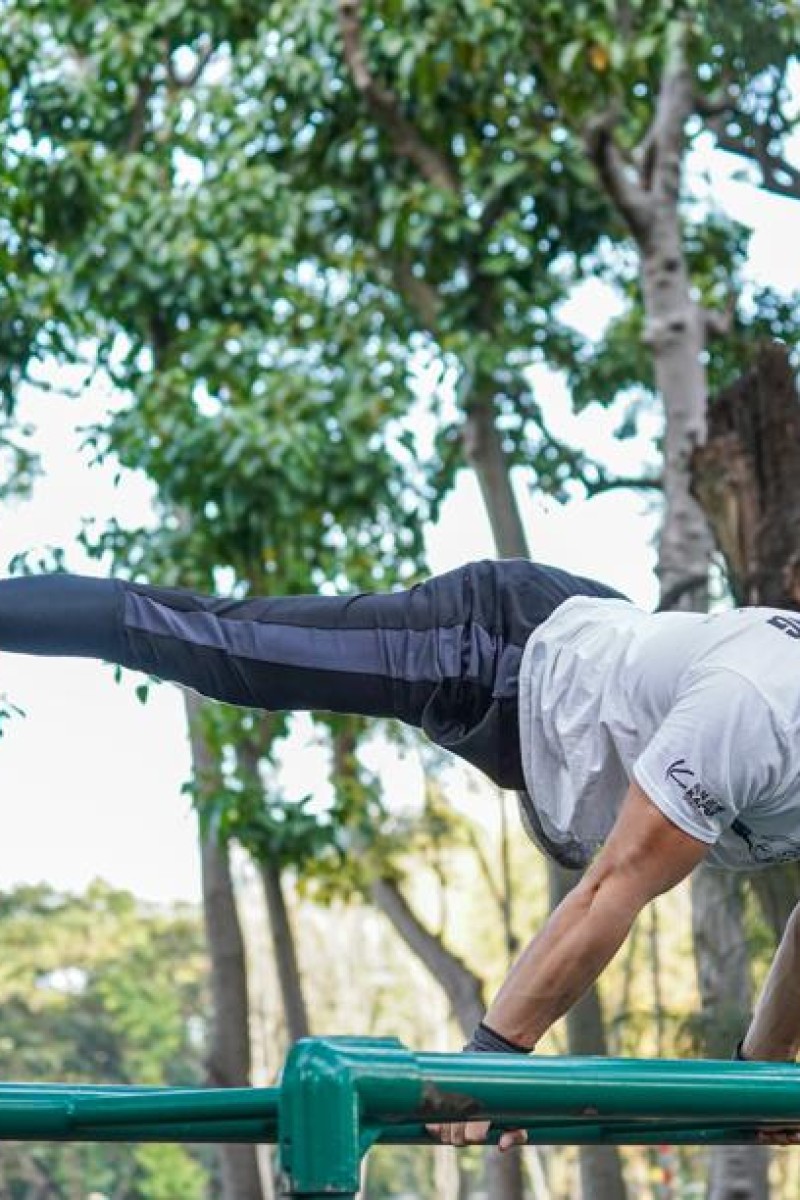 Lam Chi-long does a straddle planche lean on the monkey bars in Victoria Park.
Lam Chi-long does a straddle planche lean on the monkey bars in Victoria Park.Every day around 5pm, a group of men gather at the fitness zone in Victoria Park. Some are teenagers, while others are in their 50s and 60s. They don’t speak to each other during their brief warm-up, but they know they are all here for the same reason. This section of the park is their gym, and the monkey bars and tarmac floor are the only equipment they need. It’s all part of a back-to-basics approach to a form of exercise called callisthenics.
Callisthenics, also known as street workout, is a form of body weight training that doesn’t require any weights or machines. It combines traditional muscle-building exercises like pull-ups, push-ups and dips, with moves borrowed from gymnastics, such as handstands, planches and even 360-degree spins.
Five top Hong Kong athletes reveal their highs and lows of 2019
Like many other street workout enthusiasts, 21-year-old Lam Chi-long was first drawn to the sport because it meant he could keep fit for free. But three years on, Lam has greater ambitions.
“Many people in Hong Kong see street workout as a hobby, but I want to show them it can be a professional sport,” he says.
Lam represented Hong Kong at the WSWCF Street Workout World Cup 2019 Super Final in Stanley last month. He came 18th out of 27 contestants, ranking the highest out of the three Hongkongers who took part.
Competing on home ground meant Lam was lucky was enough to be cheered on by local fans, many of whom he teaches or trains with. But the support that meant most to Lam was that of his parents, who had initially doubted his decision to become a full-time athlete last year.
“My parents are civil servants, so they’re pragmatic people. They thought the sport was too new and not widely recognised in Hong Kong,” he recalls. “It wasn’t until they saw the positive changes in me that they realised I had really put my heart into it.”
Among these positive changes was a new circle of friends, made up of other street workout enthusiasts met during training sessions at parks and playgrounds, and students Lam had got to know in his capacity as a part-time trainer.
Trail runner Vincent Ng conquers HK's highest peaks
Lam says he used to be an introvert, but he is now able to direct his students – who can be aged anywhere from 12 to 50 – with confidence. Coaching has also improved his own knowledge of callisthenics, as he often spends hours watching online videos on how to break down complicated moves into easy-to-learn steps for his students.
Coaching is now Lam’s main source of income, but it can be hard to build a career out of street workouts. There are limited resources to support full-time athletes in the city, and the government is reluctant to build training facilities to suit their needs.
“The facilities in parks and playgrounds are not good enough for professional training. We wanted to order some tailored bars from overseas, but the government said no.”
While Lam admits the lack of funding or resources is a major stumbling block, he refuses to give up on his dream.
This student runs 5km a day ... as a warm up
“A lot of Hongkongers only care about working and saving money to buy a flat, but how many years would that take?” Lam asks.
“I don’t want to waste time on that, I don’t want to stop following my dreams.”
Lam is leaving nothing to chance; he has created his own five-year career plan, the first step of which is to win a local championship title, then an international one, and finally the World Cup Super Finals. Lam also wants to open his own indoor training centre in Hong Kong, with the aim of making callisthenics a mainstream sport in the city.
“That’s my ultimate goal,” he says. “Hopefully it will lead to more funding, so local athletes can train and perform better.”
